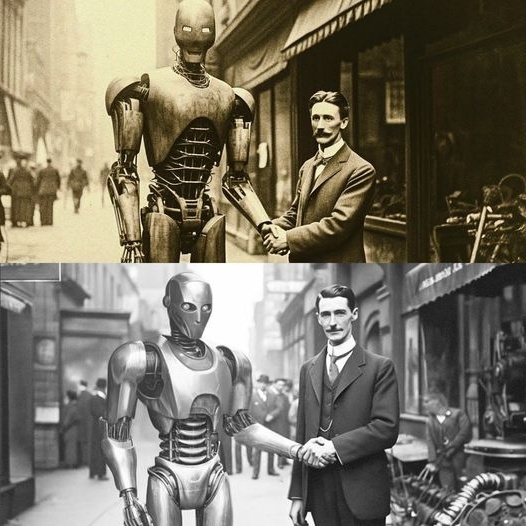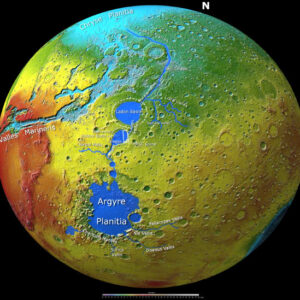The legend of Tartaria, a supposed advanced civilization erased from history, has long captured the imaginations of conspiracy theorists and alternative historians alike. Among the many claims about this enigmatic empire is the assertion that it boasted remarkable technological advancements, including superior droids—highly sophisticated robots that surpassed anything known in contemporary times. These alleged Tartarian droids are said to have played significant roles in daily life, labor, and even warfare, challenging our understanding of ancient societies and their capabilities.

The Legend of Tartarian Robotics
Proponents of the Tartarian theory argue that the civilization possessed advanced knowledge of robotics and automation that was far ahead of its time. They claim that Tartarian droids were not mere mechanical devices but were instead powered by energy sources that remain undiscovered or misunderstood today. Some even suggest that these droids may have utilized principles of free energy, drawing on the same technologies that theorists believe were behind the construction of the pyramids and other monumental architecture.
This narrative posits that Tartarian droids were used for various purposes, including agriculture, construction, and even as companions or assistants to humans. They are described as having a level of intelligence and autonomy that would rival modern-day robotics, capable of performing complex tasks without human oversight.

The Evidence: Artistic Representations and Historical Accounts
Though mainstream archaeology does not support the existence of Tartarian droids, believers in the theory often cite various artistic representations and historical accounts as evidence. Some point to ancient sculptures and carvings that depict humanoid figures engaged in activities that seem to suggest advanced mechanical functions. For instance, certain depictions of figures resembling androids or automata can be found in Egyptian, Mesopotamian, and Mesoamerican art, which are interpreted as indications of ancient robotic technology.
Additionally, some theorists claim that the mysterious mechanical automata described in ancient texts—machines that could perform tasks, such as singing or moving on their own—were actually prototypes of Tartarian droids. The Antikythera mechanism, an ancient Greek analog computer, is often mentioned as an example of advanced technology that may have originated from or been inspired by Tartarian innovations.

Advanced Materials and Construction Techniques
Supporters of the Tartarian droid theory argue that the materials used to construct these robots were far superior to anything available in the ancient world. They suggest that the droids were made from a combination of lightweight metals, crystals, and possibly synthetic materials, allowing for enhanced durability and functionality. Some even propose that these materials could have been derived from extraterrestrial sources, further supporting the notion of Tartaria’s connections with advanced civilizations beyond Earth.
The construction techniques for these droids are also said to have involved highly sophisticated methods. Believers suggest that Tartarians had mastered techniques like 3D printing or other forms of additive manufacturing long before their time. This claim posits that the droids could be produced in bulk and adapted for various functions, showcasing the civilization’s ingenuity and advanced understanding of robotics.
Droids in Daily Life and Labor
In the hypothetical world of Tartaria, droids were believed to have significantly enhanced daily life. According to the theory, these machines could perform agricultural tasks, such as plowing fields or harvesting crops, thereby freeing up human labor for more creative pursuits. Droids were also imagined to assist in construction projects, working alongside humans to erect the monumental structures that defined Tartarian architecture.
The idea that Tartarian droids could function as companions or assistants to humans adds another layer to their supposed utility. Some proponents of the theory speculate that these droids were equipped with advanced AI-like capabilities, allowing them to engage in social interactions and support humans in various ways, similar to the roles of robots in modern society.
The Disappearance of Tartarian Technology
If Tartaria was indeed a civilization with advanced robotics, what happened to this technology? According to proponents of the theory, a global reset—a catastrophic event or series of events—wiped Tartaria from history and led to the loss of its advanced technologies, including its droids. This reset is often associated with the rise of modern civilization, where knowledge was consolidated and reinterpreted, leaving little trace of the once-great empire.
Many theorists argue that the surviving remnants of Tartarian droids may have been repurposed or destroyed by emerging powers, who sought to suppress any evidence of this advanced civilization. The technological knowledge of Tartaria, they assert, was absorbed by other cultures, leading to the gradual development of modern robotics—though stripped of its original context and purpose.
Modern Robotics and Tartarian Influence
Despite the lack of empirical evidence for the existence of Tartarian droids, the theory continues to inspire discussions about the potential connections between ancient and modern technologies. Some believe that contemporary advancements in robotics, AI, and automation may be echoes of lost knowledge from a bygone era. The exploration of artificial intelligence and robotics today raises questions about how much of this knowledge is truly new and how much may have been inherited from ancient civilizations.

Additionally, the ongoing development of autonomous systems and robotic technologies serves as a reminder of humanity’s long-standing desire to create machines that can assist and augment human abilities. As researchers push the boundaries of what is possible in robotics, the debate about the true origins of these technologies and the potential influences of ancient civilizations like Tartaria continues.
Conclusion: The Legacy of Tartarian Robotics
The concept of superior droids in Tartaria challenges our understanding of ancient history and the capabilities of past civilizations. While the existence of such advanced robotics remains unproven, the allure of the idea stimulates curiosity about lost knowledge and the mysteries that may lie hidden beneath the sands of time.
As we continue to explore the depths of ancient civilizations, the question remains: What technological advancements might have existed in a world long forgotten? Whether or not Tartarian droids ever existed, their legacy inspires a sense of wonder about the potential connections between the past and our rapidly evolving future in technology and robotics.






